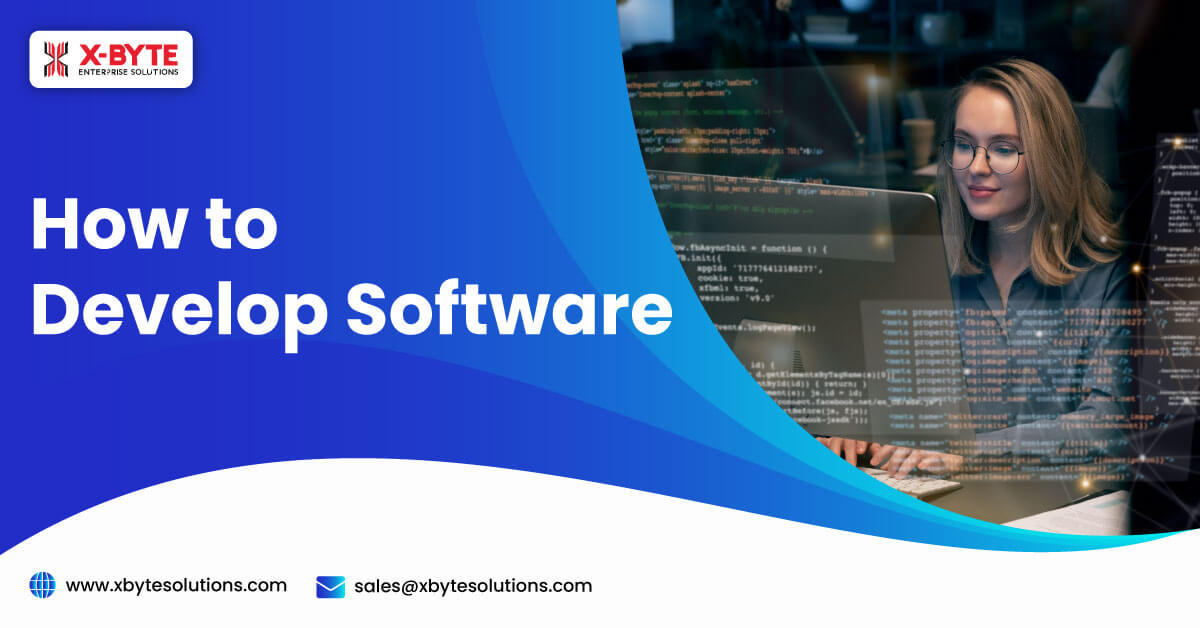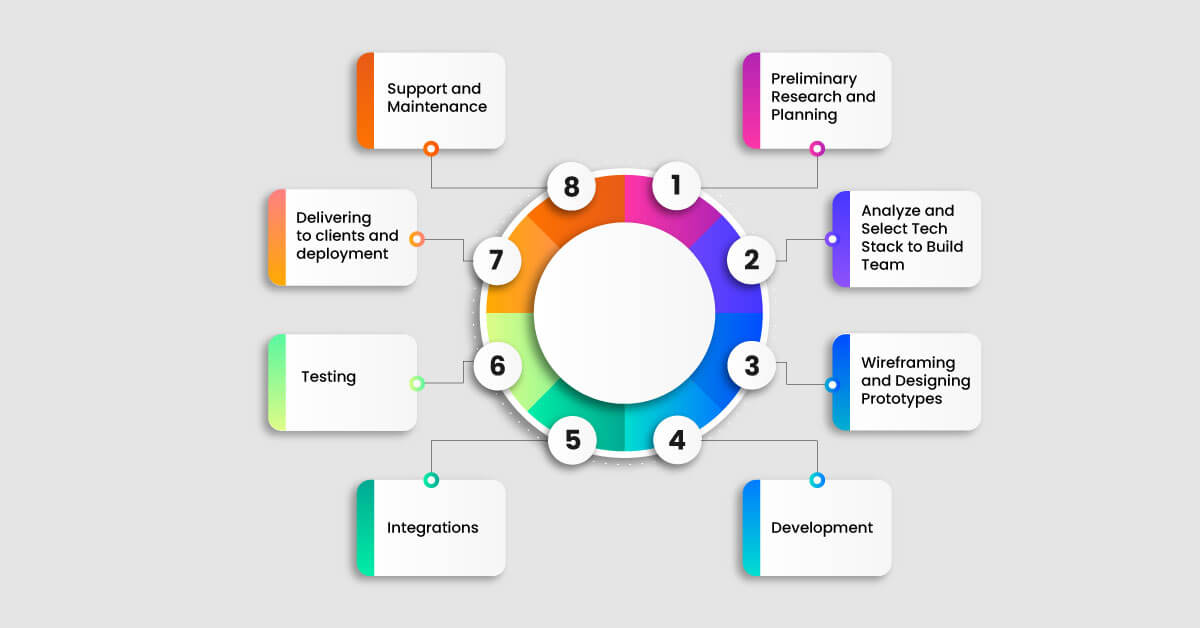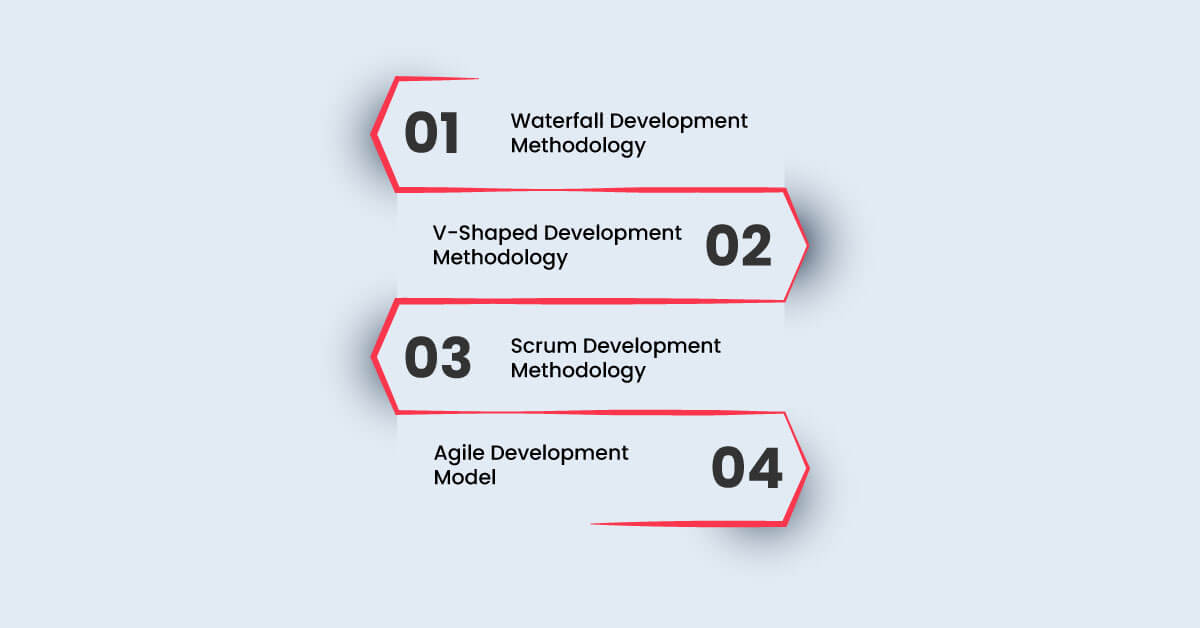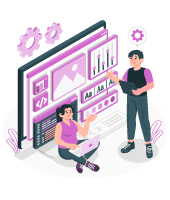-
solutinos
-
Hire
Frontend Developer
Backend Developer
-
NodeJS Developer
-
Java Developer
-
Django Developer
-
Spring Boot Developer
-
Python Developer
-
Golang Developer
-
Ruby on Rails Developer
-
Laravel Developer
-
.NET Developer
Technology
-
Flutter Developer
-
React Native Developer
-
Xamarin Developer
-
Kotlin Developer
-
Cross-Platform Developer
-
Swift Developer
-
MongoDB Developer
-
C Developer
-
Smart Contract Developers
Cloud
-
-
Services
Mobile Development
Web Development
- Work
-
Multi Services App
-
Food Delivery App
-
Grocery Delivery App
-
Taxi Cab Booking App
-
Multi Services App
-
OTT Platform APP
-
Social Media APP
-
Freelance Service App
-
Car Rental App
-
Medicine Delivery App
-
Liquor Delivery App
-
Sports Betting App
-
Online Coupon App
-
eLearning App
-
Logistics & Transportation App
-
Courier Delivery App
-
On-Demand Real Estate App
-
E-Wallet APP
-
Online Dating App
-
Handyman Services App
-
-
Process
-
Company

Quick Summary : With the changing focus on digitalization, businesses are now focusing on building a strong online presence with optimized software. For that, a pre-determined software development process and the best suitable development approach must be selected. In this blog, we will cover the necessary steps and approaches to empower businesses with digital transformation.
This digital market is broadly dependent on a robust online presence. Every business should focus on an enhanced online presence, and due to that, the need for software development companies has risen. Software development can be done by following a specific process depending on the various organizational requirements. When a software engineering team begins a project, they have numerous choices. This includes using programming languages, data storage, and the app flow across operating systems. They also need to choose the best method for writing the software code.
There are many options for developing software and selecting a suitable methodology. In this blog, we will explore the ideal software development process used by top companies and review the top methods that can make development smoother.
Statistics and Market Projections
- As per the Statista report, The Application Development Software market is expected to earn $179.90 billion in 2024.
- The market is projected to grow by an average of 6.87% annually over the next four years, from 2024 to 2028.
- By 2028, the market is expected to be worth $234.70 billion.
- Among all countries, the United States is estimated to generate the most revenue, with $91.02 billion in 2024.
- As per the report of Statista, the most popular backend, and SDKs installed for Android apps globally is Amazon AWS with 49.5%, followed by Amazon AWS Cognito Federated with 40.13% and Yandex Devkit with 15.73%
What is a Software Development Process?

Software development is an enhanced and structured method utilized by an expert development team to plan and research, select and finalize tools, design and develop software, test and deploy software, and maintain the software. It involves a systematic process of maintaining the project development lifecycle.
Here is the software development process utilized during the project life cycle to build enhanced software with a diverse set of technologies and tools.
Preliminary Research and Planning
This initial stage is also called brainstorming, as it involves compiling project requirements and creating a general roadmap for the project. When initiating the software development process, it is important to understand project ideas and conduct initial research to analyze the market trends and assess the project specifications. All the team members provide their inputs on the project, and these inputs are to be analyzed. This assists the app development team in examining the viability of research outputs. This also helps in selecting the best tools and technologies for the MVP software development process. After validating the success ratio of project ideas and determining the technologies, the development team can quickly initiate the process.
Analyze and Select Tech Stack to Build Team
Examining the required tools and technologies becomes important after analyzing the project ideas and determining the success ratio. These are selected by analyzing technological trends to create competitive applications. Based on the requirements and selected operating systems( like Android, iOS, and cross-platform solutions), the concerned team selects the suitable tools, technologies, and libraries required to establish a smooth development cycle. Once necessary tools and technologies are selected based on project requirements, the design and development team is to be formed. These experts are chosen based on their expertise, experience, and knowledge of the framework and technologies.

Leverage Our expertise in building high-performing software based on your unique business needs!
Get in Touch With Us Get in Touch With UsWireframing and Designing Prototypes
After finalizing the design tools, our UI/UX team creates wireframes and digital prototypes based on the planning stage's outputs. This involves a collaborative approach to creating engaging interfaces that boost users' experiences. It is considered the crucial stage as it decides how the app will look, flow, and connect the features.
The designing process can be done in 3 steps. Each step requires proper analysis of the project plan, tools, testing, and user-centric designs:
- Design of Overall System
- Design of Software Architecture and flow
- UI/UX Design
Design of Overall System
A detailed blueprint and flow of the app with specific connectivity can be created. It describes the necessary components' integration with each other, considering a smooth interface.
The following factors are considered to create a successful system design:
Functional Requirements: These involve determining the functionalities and features of the app
Non-Functional Needs: Flow of the features, analyzing security requirements based on specific functionality.
Restrictions: Analyzing limitations that must be considered when creating a system design, such as budget, client specific demands, etc.
Design of Software Architecture and flow
This is an important aspect where it is decided how each component and functionality will look and establish connectivity between them.
The following factors are considered to create a Software Architecture and flow.
Modularity and testing: Creating user-friendly designs with streamlined workflow and ensuring easy testing capabilities.
Feasibility and scalability: Ensuring enhanced designs and assisting in developing smooth apps to handle loads.
UI/UX Design
Every app should have an enhanced front end that assists in boosting user experience by ensuring uninterrupted performance.
User experience and interface: This involves deciding on the app's look and feel, such as the color theme and fonts.
User centric components: Every design component should be created by keeping user centric view at the focus.
Uniformity: Create designs by ensuring consistent themes, color palettes, and fonts.
Development
After testing and finalizing the design components, the actual development process begins, where coding can be done to implement the design components. This process considers utilizing the technologies and framework necessary to create the optimized application.
The development process includes:
- Backend Development
- Front End Development
- Integrations
These are important aspects of creating enhanced user interfaces, robust backend management, and interconnectivity to create user-friendly software. This step is usually time-consuming as it gives life to interactive designs. However, unnecessary time can be saved by utilizing advanced techniques and implementing the finalized aspects.
Integrations
To enhance the capabilities of the developed software, third-party APIs and required software systems are to be integrated to boost the performance and efficiency of the app. These apps help establish integration to enhance the solution's features and workflow.
The most important aspects that need to be considered are:
- When selecting an API, it is important to ensure the security and privacy of the data.
- Smooth integration with third-party apps
- Seamless and uninterrupted flow of data
Integration can be done with the following systems:
- In-house apps: ERP, CRM, and other employee management systems
- External apps: Systems that manage business operations and market analysis
- Thirs-party apps: Payment integration, alerts and notifications, authentication, social media integration, maps, and more.
- Hardware and database: Integrating database management system, personal devices, hardware paths, etc.
Testing
Once the development and necessary integrations are done, the software is transferred to the quality assurance team for analysis and testing. For this, the QA team utilizes automated and manual testing methods to conduct rigorous testing. While using automated testing methods, testers usually use specific tools and techniques to find vulnerabilities in the software. If loopholes are found, the team lists them with supporting documents so developers can easily resolve them.
This phase includes testing several aspects to ensure an app is working smoothly.
- System testing: Conducting overall system testing to ensure the workflow, features, and functionality are working properly. System testing is essential because it helps determine whether an app meets project requirements.
- Unit and Module testing: Each section and module is thoroughly tested to ensure the uninterrupted flow of the application.
- Testing integrations: Detailed checking and testing of the integration made to ensure the app flow is streamlined and every integration works efficiently.
- Functional Testing: Analyzing whether app features and functionalities are working as per the requirements or not. Each feature and functionality is compared as per the project specifications.
- Performance and loading: Testing the overall performance and loading speed of the app on several platforms, browsers, and operating systems.
The test results are to be noted in a report, and developers resolve it to make the app ready to deploy.
Hire Dedicated Software Developers to Fulfill Project Requirements within Budget!
Delivering to Clients and Deployment
Once bugs are resolved and the application is working smoothly, it is ready to be shared with clients and deployed on the specific store for public use. Once an app is fully functional and optimized, it is delivered to clients to ensure its users can use it. Training and a demo of the software are required so that clients can understand the app's workflow. Most importantly, an app should be easy to use, visually appealing, and have a streamlined flow, and clients should quickly learn to use it.
Support and Maintenance
Successful project delivery is not sufficient. Providing constant support, upgradation, and maintenance services is essential to make sure that an app is working smoothly.
An app can provide optimized performance when issues are solved on time and are up to date with current market trends.
There are several tasks included to ensure smooth support and maintenance services:
- Fixing Bugs and errors: Solving errors and problems when they arise to have bug free solutions with enhanced functionalities.
- Upgradations: The market is constantly evolving, and customers always require something new. Fulfilling their requirements by updating features and functionalities in the existing solutions. These help in enhancing capabilities, improve app performance, and keep it up to date.
- Monitoring and enhancing performance: Analyzing and monitoring performance to make sure an app is compatible with the platform.
- Security measures: It is important to ensure app security by keeping an eye on emerging threats. Data integrity and privacy are vital with every update.
- Constant Support: Sometimes, users face problems and hurdles to ensure uninterrupted app flow. For that, support services become important. With emerging trends, AI enabled assistants are to be integrated into an app to solve the problems promptly.
Software Development Approaches

A software development approach is a set of techniques used to design and develop high-performance software. The main objective of diverse methodologies is to build and manage an expert team to create robust and secure software.
To ensure a smooth development process, choosing diverse tools and technologies is essential. This selection highly depends on the project requirements, goals, customization, and integration required.
The team can select any of the development methodologies by implementing diverse quality metrics, but it should have standard stages of development like:
- Determining project concepts and gathering requirements
- Planning and selecting the tools
- Designing and development
- Testing and deployment
- Support and maintenance
There are various development approaches depending on the requirements of the project.
Waterfall Development Methodology
The waterfall development model is a well-known process that developers have increasingly utilized for a long time. It is simple to use and learn, which makes it a prime choice for developers. In this method, every task of the development lifecycle is ordered in a sequential and cascading manner. The most important aspect of using this model is that each stage should be completed before starting the next development phase.
V-Shaped Development Methodology
A V-shaped development model is similar to a waterfall approach, but there is a difference. This model is inspired by the letter V, representing the app development procedure's progression.
From gathering project requirements and practical analysis to starting design, implementation, development, testing, and app maintenance. In a V-shaped development model, testing is performed simultaneously with the software development process. This method is also called validation and verification. The next development phase should start after validating the last phase. This means that a corresponding testing process is done with each development stage.
Scrum Development Methodology
Scrum is a flexible development approach that is based on the basic principles of Agile. It follows an incremental and iterative approach. In this model, the team is self-organized and dedicated to a common development goal. It involves conducting purposeful meetings, technologies, and role-based team management. The scram model includes a Scrum Master, Software owner, and dedicated development team. A Software owner collects the basic project details and makes sure the team is working towards achieving the project specifications.
Additionally, a Scrum master ensures the development team is familiar with the Scrum development process. This helps team members to be flexible and adaptable to change.

Wondering about Creating Scalable and Optimized Software within your budget without compromising on Quality and UI/UX?
Contact Our Team Now! Contact Our Team Now!Agile Development Model
Agile methodology is a form of incremental development model whose primary focus is enhanced software quality. This approach is a continuous process that provides faster results to fulfill users' requirements. It usually doesn't focus on creating documentation for the project. The app development process is divided into small tasks and milestones with specific time durations. It also enables transparency and smooth communication between parties involved in the development process. So, this model is essential to ensure a streamlined and transparent app development flow.
Conclusion
It is essential to follow a pre-determined process to build robust, scalable, and optimized software. But by choosing the right software development technology and frameworks, developers can create solutions that help create user-centric solutions. This ultimately fulfills the requirements of clients by creating custom software from scratch using suitable development methodologies.
If you are looking for custom software app developers to create enhanced solutions, you can connect with our expert team of developers.
Frequently Asked Questions
-
What is the software development life
cycle(SDLC)?
An SDLC (software development lifecycle) is an iterative and enhanced process used by a development team to design and develop qualitative software. The main goal of following a software development life cycle is to reduce the risks with enhanced planning. This helps fulfill project requirements and enhance the customer experience. that can be assigned, completed, and measured. This process outlines the steps where the whole development process is divided, completed, and measured.
-
How do you choose a software development
company?
There are several factors need to be considered while developing your optimized and feature-rich software:
- Evaluating and analyzing company experience
- Examining company portfolio and projects
- Analyzing client feedback and project experience
- Determining team size and experience
- Understanding development process and approaches
- Evaluating security practices and payment methods followed
- Considering the communication chain and support services
-
How do you choose the right software development methodology?
Choosing the right software development approach depends on the following aspects:
- Understand software development requirements
- Determine the end users
- Know the project size
- Evaluating different methodologies
- Select the best approach and development process to follow
- Create an experienced team
- Follow the approach and fulfill the necessary requirements
-
What programming languages are best for developing mobile apps?
There are several programming languages utilized for the mobile app developmentprocess, including PHP, JavaScript, Java, Swift, Kotlin, and C#
-
What are the types of software testing and their importance?
There are two main types of testing performed, which are Automated and Manual testing approaches, to determine the software's performance. Software testing is considered to be the key aspect of a successful software development process because
- It helps enhance the efficiency, performance, and flow of the application.
- Testing assists in evaluating the app to find bugs and vulnerabilities, solving them for a smooth workflow.
- It helps the team to understand the expected and actual outcomes based on the initial project analysis
- It assist in enhancing the quality and adaptability of the software
-
How to deploy a software application?
A software application deployment required to follow these steps
- Schedule and plan project deployment
- Creating and Enabling automation
- Building Continuous Integration and Continuous Delivery (CI/CD)
- Develop and test the scripts
- Analyzing key metrics and testing
- Enable deployment automation
- Updating concerned team
- Monitor deployment and improve when needed
-
How much does it cost to build an app?
A software development cost depends upon the following factors:
- Creating simple or complex apps
- Custom apps with unique features
- Budget and timeline
- Team expertise and experience
- Tools and technologies used
- UI/UX of the app
-
How much time does it take to build an application?
The time duration to build an application depends upon several factors. These factors include expertise and experience, budget, and project specifications. Usually, a simple app development takes the time of 4-5 months. On the other hand, a complex and highly customizable app requires a time duration of 7-9 months.
-
What are the latest trends in software development?
App development is constantly evolving, and with that transformation, software development service providers should also be required to stay updated with the changing market scenario.
Some of the latest trends include:
- Artificial Intelligence and Machine Learning
- Internet of Things (IoT)
- Augmented Reality and Virtual Reality
- Blockchain
- Cloud Computing
- Edge Computing
- PWAs (Progressive Web Apps)
- Microservices
